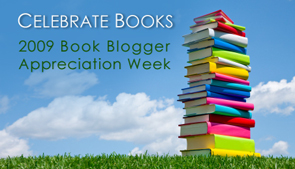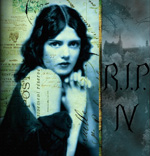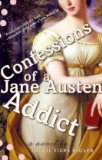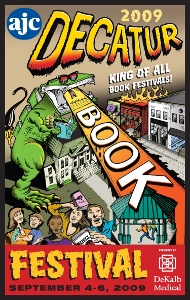Stefanie shared her responses to this meme for Book Blogger Appreciation Week. Consider yourself tagged if you want to play along.
Do you snack while you read? If so, favorite reading snack? Sometimes, but the snack varies according to what I’m craving. I do find it difficult to eat a full meal while reading, but note I said “difficult” and not “impossible.” I always read when I’m eating out alone.
Do you tend to mark your books as you read, or does the idea of writing in books horrify you? It depends. I absolutely mark my professional reading or school reading. Pleasure reading? Not so much, though sometimes. When I do mark, my tools of choice are pencil and/or yellow highlighter.
How do you keep your place while reading a book? Bookmark? Dog-ears? Laying the book flat open? Most of the time, I use a bookmark. I can’t stand dog-earing pages, and I hate it when someone does that to a book I loan out. I do lay the book flat open if I’m going to turn right back to it.
Fiction, Non-fiction, or both? Both, but I definitely prefer fiction for pleasure-reading.
Hard copy or audiobooks? I think the costs for audiobooks are prohibitive. I can get a paperback so much cheaper. That said, I do like them and will listen to them. I forget to get them at the library.
Are you a person who tends to read to the end of chapters, or are you able to put down a book at any point? I like to wait until the end of a chapter before putting a book down for any length of time, but if I can’t do it, I have to at least end at a paragraph. I can’t stand it when I’m interrupted in the middle of a sentence.
If you come across an unfamiliar word, do you stop and look it up right away? Only if I can’t figure it out in context. I am reading Crime and Punishment via DailyLit and had to look up casuistry this morning. Of course, sometimes the fact that I don’t look words up sometimes means that I don’t immediately get the exact meaning from context and consequently use the word wrong.
What are you currently reading? Crime and Punishment in tiny bites from DailyLit, Dracula on my iPhone, and Grendel, but I think I’ll finish Grendel tonight.
What was the last book you bought? See my previous post for the full list.
Are you the type of person that only reads one book at a time or can you read more than one at a time? I used to read just one at a time, but over the last couple of years, I found I was able to read several. I don’t think I could do more than two at a time if not for DailyLit, however.
Do you have a favorite time of day and/or place to read? Evening before I settle in. I also like to read in the bath when I can.
Do you prefer series books or stand alone books? I don’t have a preference as long as the series is good. I hate getting sucked into a series only to have it be uneven or end poorly (cf. the Twilight series, or at least in my opinion).
Is there a specific book or author that you find yourself recommending over and over? The Poisonwood Bible by Barbara Kingsolver, Ahab’s Wife by Sena Jeter Naslund, The Thursday Next series by Jasper Fforde, How to Read Literature Like a Professor by Thomas C. Foster
How do you organize your books? (By genre, title, author’s last name, etc). In stacks and piles with no scheme whatsoever. It would most likely make you cringe.




